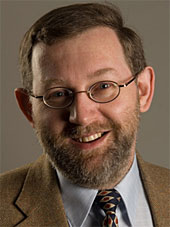Theonomists and the Gospel


(Pilfered from Tim Gallant’s blog.)
A quote from David Field’s Samuel Rutherford and the Confessionally Christian State:
 Evangelical defeatism is a failure of Biblical perspective. After all, the risen Lord Jesus has been given all authority in heaven and on earth and has been made head over all things for the Church; he is the ruler of the kings of the earth and he is currently putting his enemies beneath his feet; he has presumably asked the Father for the nations as his inheritance and the ends of the earth as his possession – and so he will receive them. All nations will bow to Jesus and all kings will serve him and his kingdom will grow to become the largest plant in the garden with the nation-birds finding rest in its branches. His kingdom is the stone which crushed the kingdoms of men in Daniel 2 and which is growing to become a mountain-empire which fills the whole earth. He is the firstborn from among the dead and therefore it is right that in all things he has the first place. He has been highly exalted and not only will every knee bow to him but every knee should bow to him.
Evangelical defeatism is a failure of Biblical perspective. After all, the risen Lord Jesus has been given all authority in heaven and on earth and has been made head over all things for the Church; he is the ruler of the kings of the earth and he is currently putting his enemies beneath his feet; he has presumably asked the Father for the nations as his inheritance and the ends of the earth as his possession – and so he will receive them. All nations will bow to Jesus and all kings will serve him and his kingdom will grow to become the largest plant in the garden with the nation-birds finding rest in its branches. His kingdom is the stone which crushed the kingdoms of men in Daniel 2 and which is growing to become a mountain-empire which fills the whole earth. He is the firstborn from among the dead and therefore it is right that in all things he has the first place. He has been highly exalted and not only will every knee bow to him but every knee should bow to him.

or Typology: Deadly Weapon or game of Scattergories?
“Chiastic literary analysis has completely destroyed liberal literary criticism. Liberalism is in tatters, bleeding and dying. Liberalism cannot survive Dorsey’s chiastic proof of the total unity of Isaiah, for instance. Dorsey finds loads of 7-fold chiasms in the Bible. I’ve found scores more, quite independently. What Dorsey does not see is that these are recaps of the chiasm of the 7 days in Genesis 1. And that’s good, because it means he did not go through the Bible forcing passages into heptamerous chiasms. He just found them there, and others can see that these track Genesis 1 as ‘new creation’ passages.”
—James B. Jordan, A Reply on the Nature of the Psalter, Biblical Horizons blog, biblicalhorizons.wordpress.com, referring to David A. Dorsey, The Literary Structure of the Old Testament.
If chiastic literary analysis (along with typology as I posted recently) is such a powerful weapon against a modernist interpretation of the Bible, why are these methods of study shunned by those who oppose liberal theology? Why are theologians hauled over the coals for using it if it leaves the enemy in shreds?
One of the big problems with modern theology is its habit of categorising parts of the Bible into literary genres. For sure, the Bible contains historical prose, visions, poetry and songs. But many passages won’t actually fit into these neat little pigeon holes without hamstringing their intended purpose. And as it turns out, these “genre-lisations” are excuses to compromise with humanistic pop-philosophy and pop-history.
The three main gripes I have are misuses of the genres poetry, polemic and apocalyptic.
Background
In 587 BC, the Jews saw the city of Jerusalem fall to the Babylonians and the Temple, built by Solomon nearly 400 years before, destroyed. The experience of this devastating judgment was made all the more bitter because the Edomites, their brothers and next-door neighbours, not only did not come to the aid of the Jews but, far worse, rejoiced in their humiliation, mocked their pain, looted their goods, and handed over their survivors to the Babylonians. The book of Obadiah is a prophecy, probably given shortly after the fall of Jerusalem, which tells of the judgment of Edom and the restoration of God’s people…
Interpretation
The book of Obadiah does not mention the sins of Judah or the destruction of the Temple – it is emphatically not a “sanctuary” book about the relationship with the Father. Similarly, no mention is made of the Babylonians or of what to do in exile – Obadiah is not a “world” book about the relationship with the outsider. Rather, the book of Obadiah is all about the Edomites – about their pride and self-reliance and malice. This is a “land” book about relationship with the “brother”. But who is this “brother” (see vv.10, 12)? The whole book is spoken to or about Edom. But who is Edom?
Postmillennialism and preterism
from davidpfield.blogspot.com
“It’s been a very long time since I looked at Louis Berkhof’s Systematic Theology. But when I was flicking through it today I noticed a section called “Objections to Postmillennialism”. This is in his first paragraph:
There are some very serious objections to the Postmillennial theory.
The fundamental idea of the doctrine – that the whole world will gradually be won for Christ, that the life of all nations will in course of time be transformed by the gospel, that righteousness and peace will reign supreme, and that the blessings of the Spirit will be poured out in richer abundance than before, so that the Church will experience a season of unexampled prosperity just before the coming of the Lord - is not in harmony with the picture of the end of the ages found in Scripture. The Bible teaches indeed that the gospel will spread throughout the world and will exercise a beneficent influence, but does not lead us to expect the conversion of the world, either in this or in a coming age. It stresses the fact that the time immediately preceding the end will be a time of great apostasy, of tribulation and persecution, a time when the faith of many will wax cold, and when they who are loyal to Christ will be subjected to bitter sufferings, and will in some cases even sealed their confession with their blood, Matt. 24:6-14, 21, 22; Luke 18.8; 21.25-28; II Thess. 2:3-12; II Tim. 3:1-6; Rev. 13.
I don’t know about “just” before the coming of the Lord but what I found most striking was that, in my view, every one of the six passages he cites in defence of his objection to postmillennialism has reference to first century events.
There are other things to say about the relationship between postmillennialism and preterism but I thought this remarkable.”
 David Field1 says the Totus Christus, the Whole Christ, is “one and many in federal union = in covenantal oneness.” It is Jesus as head and the church as His body.
David Field1 says the Totus Christus, the Whole Christ, is “one and many in federal union = in covenantal oneness.” It is Jesus as head and the church as His body.
Whenever God does something in redemptive history, the Devil produces a counterfeit. Something I have just noticed about the Revelation is another aspect to this ‘evil twin’ pattern. It is a counterfeit Totus Christus.
After the ascension of Christ, Satan was thrown down from heaven to the Land, and took up residence in Herod’s Temple as Jesus predicted (Matthew 12:45). (Notice that Jesus’ ministry as Adam was heaven-garden-heaven, and Satan’s counterfeit usurping was thus garden-heaven-garden.)
Revelation then moves into a description of two warring armies, the saints with lion faces, and the ‘bad Nazirites.’ The Jews and Judaisers as Jezebel, the false church, are finally destroyed; the true church is massacred but ascends to be with Christ “in the air.”
So the church is Christ’s permanent body. Satan’s brief possession of Judah (Land Beast/False Prophet) and Rome (Sea Beast) was the Totus Diabolus in the Land. He will not be able to do such again until he is released for a short season at the end of World history.
I guess this also means that, in response to the marriage supper of the Lamb, and the faithfulness of Christ to His bride, the best Satan could manage was a one night stand.
1 http://davidpfield.blogspot.com/2006/10/totus-christus.html
Whether we wear a cross around our neck and/or a white lab coat, whether we carry a Koran and/or a microscope we’re all wearing glasses called “what we think and what we think we know up to this point”. Some of those help us see more clearly and some obscure things badly. But, if I can put it like this, our eyeballs are attached to the glasses – the moment we take off the glasses then we see nothing at all. We all have our pre-commitments. We’re all standing somewhere.
Sometimes you’ll hear a “scientist-in-epistemological-denial” or a “campaigning-anti-Christian-scientist” argue as though religious people are the ones with presuppositions and a subjective standpoint whereas scientists are neutral and objective. Real scientists know better: you can’t get out of your own mind in order to think about things.
The Christian version of recognizing this is cheerfully to acknowledge our pre-commitments and renounce all claims to neutrality. We are breathing God’s air as we talk about him, using his gift of sight as we observe things, and spending time which he has given us as we get on with life. The whole earth belongs to Jesus Christ and those who deny that are still walking on his property and breathing his air as they do so.
The anti-Christian version of recognizing this is harder to find. Statements such as, “I realize that I am not neutral; I am already committed to disbelieving the Christian account of things; that is the territory I occupy as I go about my observing and hypothesizing; and I am more than comfortable with the thought that my rejection of God colours everything I see.”
David P. Field, Science and Christianity 6/8, http://davidpfield.blogspot.com
No Bible commentary is the last word, but James Jordan’s seven-year effort gets the ball through the hoop on Daniel. Here’s an excerpt from David Field’s review:
The approach of the book is marked by
1. Immersion in and informed reference to the rest of the Hebrew Scriptures. The use of Genesis, Exodus, Leviticus, Ezra-Nehemiah, Esther, Isaiah, Jeremiah, Ezekiel, and Zechariah is astonishing and enriching at every turn. Use of or comment upon other books along the way are unfailingly stimulating and this applies to NT books as well, not least to Revelation which is greatly illumined by this work on Daniel.
2. Confident deployment of redemptive-historical paradigms which have themselves been recognized through close and repeated study of the whole Bible. In particular, theologico-spatial zones, old creation /new creation eras, and prophet /priest /king roles feature heavily and often have real power to unlock or clarify the subject in hand.
3. The closest of close structural analysis of the sort that comes from multiple readings. Chiasms and parallels and other patterning devices are attended to with great care and in such a way as positively informs the interpretation rather than being mere observations along the path.
4. Seriousness about chronology. This is one of the characteristics of Jordan’s work overall, since he sees emphasis on “ideas” at the expense of history as revealing and strengthening the gnosticism of much contemporary Christianity. The detailed chronological work lying behind his interpretation of Jeremiah and Ezekiel and his resolution of some of the Daniel “difficulties” is awesome.
5. Interpretative weight given to what still gets called “inter-testamental” history. Inter-testamental history is redemptive history and Jordan emphasizes that God speaks to and about that period in the patterns of Daniel 1-6 and in the prophecies of Daniel 1-7.
6. Attention to numerics: word-counts, significant numbers, and the meaning of numbers. There is work here to compare with Bauckham’s work on Revelation.
7. Typology. This is not a “typological” commentary as such because although half of Daniel is narrative, half of it is apocalyptic prophecy. But when you attend to redemptive-historical patterns and to literary structures and sequences and to the importance of history as Jordan does, then, in some sense, all your work will be typological. At the macro-historical this means that Daniel is one of God’s major interpretative words for the entire second phase of the first creation. The first creation has a former days and a latter days and then gives way to the new creation. Daniel tells us about the last centuries and decades of the latter days of the old world.
8. Cheerful (and sometimes curmudgeonly) unfashionableness. Early dating, traditional authorship, defense of biblical chronology, unashamed constant reference to Christ (how could it be otherwise?!), impatience with “unbelieving scholarship”, utter lack of interest in being respected and consistent resolve to be useful. This may be a difficult example for young scholars (like those in Daniel 1!) to follow but it is thoroughly refreshing.
9. Theological creativity at level “Genius”. I thought I knew Jordan’s work reasonably well but over and over and over again there are “aha!” moments. In my copy now there are almost more sentences and paragraphs marked than unmarked!”
“The Handwriting on the Wall” is available from www.americanvision.com
Also available as an e-book.